Psychic Warrior Read online
Copyright
COPYRIGHT © 1997 by Bob Mayer, Updated 2011
This is a work of fiction. Names, characters, places, and incidents either are the product of the author’s imagination or are used fictitiously, and any resemblance of fictional characters to actual persons living or dead, business establishments, events, or locales is entirely coincidental.
All rights reserved. No part of this book may be used or reproduced in any manner without written permission from the author (Bob Mayer and Who Dares Wins Publishing) except in the case of brief quotations embodied in critical articles or reviews.
Electronic ISBN: 9781935712657
Author’s Note
While this is a work of fiction, two Special Forces A-Teams from 10th Special Forces did go through Trojan Warrior training while I commanded an A-Team in that unit. My team was used as the baseline for evaluation purposes.
The Past: Prologue
April 10, 1963
The wind swept the desolate land of the Severnaya Zemlya chain of islands with no mercy for the sparse vegetation that struggled to grow among the rocks. The few plants only showed their face for a month at the height of summer. The rest of the year, the island was covered with a freezing layer of driven snow and blistered ice. The only exception was the airfield on the eastern side of the one island in the chain that held human life. The island was labeled on maps as October Revolution Island, but none of those sheets indicated that there was any habitation here, ten degrees above the Arctic Circle. The existence of the airfield and the base it served was one of the most highly kept secrets in the Soviet Union.
The men stationed on October Revolution Island, part of a unit known only by the typically bland Soviet code name Special Department Number Eight, would not have called their situation habitable; more on the order of barely survivable. The security forces were billeted in poorly constructed concrete buildings that lined the edge of the metal-grating airstrip. But it was far underground that the true essence of the work done in this forsaken spot was conducted.
Eight hundred feet down, accessible via only one large freight elevator, lay the core of Special Department Number Eight, known in inner circles simply as SD8. It was run by the GRU, the Soviet military's version of the KGB. And to keep the work done there secret from the KGB, as well as the NATO countries' spy services, was one of the reasons that this remote spot had been chosen.
The SD8 complex had been dug out by Nazi soldiers still being held prisoner by the Soviet Union in the mid-1950s. These men had been captured during the last years of the Second World War, and those in power had never seen any point in even reporting their existence, never mind repatriating them. The prisoners were useful in certain ways, such as working on this project. Upon completion of the task, the German soldiers had been summarily executed and dumped into the freezing waters of the Arctic, each of the twelve hundred bodies weighted down with a heavy iron chain.
Those Russians who worked in the complex had the highest clearances granted in the Soviet Union. Today was to be the test of whether all the time and expense they had put into the project over the last several years would bear fruit. There had already been one major disaster, and today's trial was to be either the beginning or the end for this particular project.
Professor Leonid Vasilev was the head of the theoretical arm of the SD8 scientific team, and as such was the second-highest-ranking scientist present on the island. But he was still number two and he often did not agree with his superior, Professor Arkady Sarovan, who had been in charge of SD8 from the day it was founded, during the dark and bitter years of the Great Patriotic War, the Soviet name for the Second World War. It was Sarovan's job to take theory and create action, and today he planned on taking that first step, over Vasilev's objections.
"It is not ready," Vasilev argued for the third time that morning. He was a tall, slender man, with thin, straight blond hair and a face badly scarred by acne. In a briefcase, he carried the master program for the project on a spool of computer tape.
"It is indeed ready," Sarovan said with forced patience. He was short and stocky, and the body hair poking out over the collar of his white coat made him look like a bear wrapped in human clothes. The sloping forehead belied the brilliant mind encased behind it "It must be ready, because we have no more time. Those in power require a statement to be made, and this is the means they have chosen to make it. The timing is not subject to scientific realities, but political ones."
The two were riding the elevator down to the SD8 control room, and this was their last chance to talk privately.
"But there is great danger.” Vasilev said. “Not only if we fail, but also if we succeed."
Sarovan shrugged. “True, but if we succeed, that is for the politicians to sort out. The order for this has come from the very highest level. Khrushchev himself," he said with emphasis.
"What will they do if it works?"
"Our leaders? Or the Americans?" Sarovan shrugged. "Either way, that is not our concern."
"No, no." The quaver in Vasilev's voice testified to the fear he felt. "Not our government or the Americans. What concerns me is what they might do if we succeed."
Sarovan's bushy eyebrows contracted. He knew exactly whom his colleague was referring to, and he had experienced many a sleepless night considering the problem. "It is like nuclear weapons, my friend. They are very dangerous, but as long as we keep them under positive control, they cannot harm us."
Vasilev expelled a snort of disgust. "Nuclear weapons don't think for themselves."
"We have positive control over the way they think," Sarovan said flatly.
"But we don't understand what we're dealing with! We don't really understand how they do what they do."
"We know enough to use them."
Vasilev shook his head. "No, we don't. We're meddling with unknown forces. Things beyond our knowledge."
The argument was over as the large elevator doors rumbled open. On the other side were a dozen senior GRU officers, present to oversee the test. As Sarovan walked forward, his large paw extended to greet them, Vasilev went over to the main console. He pulled the program out and slid the tape onto the spool for the large computer.
The control center was carved out of solid rock, and no matter how high the heat was turned up, there was always a damp chill in the air. It was a semicircular room, over seventy feet long by twenty in depth. The front was walled in with thick blast glass overlooking the test chamber. The test chamber was also hollowed out of the rock and was two hundred feet in diameter, with a ceiling over fifty feet high. The far wall of the chamber was filled with banks of capacitors, all designed to handle the large amount of power brought in from a small nuclear reactor on the surface. On the floor in the center of the chamber lay the result of twenty years of hard work by the scientists of SD8.
There were four objects shaped like coffins, eight feet long by four in width and height, evenly spaced around a huge vertical metal tube. Their lids were open, revealing a contoured space where it was obvious a man was to lie. Numerous wires and tubes came out of the sides and top of each, running to machines that completely encircled the four. In the exact center was the shining metal tube, eight feet in diameter and thirty feet high. The tube rested securely on a cradle, and several monitoring wires ran from the top, looping over to the control center. The bottom of the tube pointed into the floor, where a vent shaft extended over a half mile into a volcanic crack deep under the island.
The tube was hollow, with two-and-a-half-foot-thick walls. There were two openings in it. The one at the bottom led into the vent shaft; the other, near the top, was a three-foot-wide section of wall that had been unscrewed. Around the outside of the tube were numerous black wires, linked to a thin network o
f silver strands crisscrossing in strange patterns.
Vasilev knew all the expertise and guesswork that had gone into building the tube. Even getting it down here had been a task, requiring the removal of the freight elevator for several days as the tube was lowered down and then maneuvered into position with great difficulty. It had been built to exact specifications under a cloak of secrecy at the largest tank factory in the Soviet Union.
He checked his status board for the computers that were linked to the tube. The spool ran the tape through, loading the program. The system was ready.
A red light began flashing in the ceiling and a buzzer sounded. The mission was a go.
Vasilev looked across the control panel. He tapped a technician on the shoulder. "The emergency neutralizer. Is it functioning?"
The technician nodded. "Yes, sir."
"Good."
A door on the far side of the experimental chamber opened.
*****
On the other side of the globe and in a more temperate zone, the USS Thresher, the American Navy's most advanced nuclear attack submarine, was preparing to conduct its own set of tests: a series of deep-sea dives one hundred miles to the east of Cape Cod. On board were sixteen officers, ninety-six enlisted men, and seventeen civilian technicians to monitor her performance.
The Thresher was the first in a new line of submarines. It was small, less than three hundred feet long by thirty-two feet wide, and all those extra personnel made working inside quite cramped. Today the new ship was going to be tested to see how deep it could dive and operate. This new breed of attack submarine had been developed to directly counter the Soviet threat of ballistic missile submarines.
After getting approval from the commanding officer aboard the Skylark, the surface ship monitoring the tests, the Thresher began its first descent. Just over the horizon to the east, a plane circled.
***
Soldiers came through the door, pushing four gurneys on which were strapped the other critical component of the SD8 project. IVs ran into the arms of each of the four prone men, and sheets covered their entire body. Of all those stationed at Special SD8, these men knew they were never going to leave October Revolution Island. At least not in the way that one would normally expect.
The soldiers wheeled a gurney next to each coffin. They pulled the sheets aside and Vasilev could hear the gasps from the GRU officers in the control center.
Each of the four men was horribly disfigured. All four were blind, their eye sockets empty, the gaping holes red and scarred. On each man's head four metal sockets extended, having been surgically implanted through the skull directly into the brain. It had taken the scientists at SD8 many years to perfect the technique of implanting those sockets and to determine the correct location for each. Fortunately, they’d had hundreds of prisoners to experiment on, all of whom had joined the German soldiers in their watery grave.
"Was the blinding necessary?" One of the officers had stepped back from the blast glass.
"It allows focus, Comrade Colonel," Professor Sarovan replied. "Also, you can appreciate that these men can never escape in the condition they are in."
General Vortol, the head of the GRU, gave a nasty laugh. "If only we could do such to all our prisoners. A most effective anti-escape device."
Vasilev could not control the choked noise he made, and the others heard it.
"Do you have something to say, Comrade Scientist?" General Vortol demanded.
"I don't believe it was necessary to blind these men," Vasilev said. He knew with that simple statement his career, if not his life, was over. But he could sense the mental power that was coming out of the test chamber as the soldiers lifted each of the four men into their coffins. Vasilev had no desire to be a part of this.
"Vasilev!" Sarovan snapped, but the general's voice overrode his.
"These men are criminals, are they not?" Vortol stared at Vasilev. He waited. "Are they not, Comrade Scientist?"
"Yes, General," Vasilev finally answered.
Vortol had a file folder in his hand, and he glanced at it. "And we could not be assured of their cooperation, correct?"
Vasilev could see that each of the four men was inside his case. Scientists were hooking wires to each body, picking up different colored leads that looked very similar to those going to a car's spark plugs. The colors corresponded to those on the four metal sockets. They attached the leads to the sockets and screwed them down tight. None of the four men moved; they were guinea pigs used to being treated as such.
"Comrade General," Vasilev said, "perhaps, then, we should have waited until we found four men whose patriotism we could be assured of?"
"And who would volunteer to allow this to be done to them?" Vortol laughed. "You scientists are quite naive. This is still in the experimental stage. If you succeed today, then perhaps we could allow you to use different subjects."
"Sir, we-" Vasilev began.
"Enough!" Sarovan snapped. "You are to stand down, Comrade Vasilev. We will deal with you later."
Vasilev looked into the chamber once more. Earphones were securely fastened onto each man's ears. Rhythmic music was being pumped in through the wires at a very high volume. Vasilev knew the purpose of the music was to keep each man's attention and also to prepare the harmonics of the brain. He had spent three years determining what type of music worked best, amid all the other aspects of this project he had worked on.
The red flashing light ceased its activity, and the experimental chamber was plunged into darkness except for a single searchlight, centered on the metal tube. At a signal from Sarovan, the lids on each of the coffins swung shut. Fluid pumped in, floating the men inside, while air from the chamber was delivered to them through a tube clamped into their mouths. The liquid was heated to exactly body temperature and furthered the subject's sensory deprivation.
Vasilev was ignored as the party gathered around a machine in the control room. Sarovan placed a photograph of a submarine, the Thresher, on a piece of plate glass on the top of one of the machines.
"This image is being fed through the machines directly into the occipital lobes of each of the four men," Sarovan explained to the military officers. "They see it as if it were before their eyes. It is the only 'light' they have seen in weeks. They have to see this image. They have no choice. We are also intermittently sending them the location of the submarine in a series of image stages from large scale, then narrowing down to the exact location."
"So they see it and they have the location," Vortol growled. "I still do not understand how this works."
Sarovan did his best to swallow his sigh. "Comrade General, what we are dealing with here is a new physics. We call it the Many-Worlds Interpretation of quantum mechanics. We have been studying it for a while.
"In normal quantum mechanics, you have electricity, which is the emission and absorption of virtual photons. You have AM radio, which is electromagnetic modulation of photons, and you have FM radio, which changes the frequency of the photons into what you call radio waves." He glanced up. He knew he'd already begun to lose the general, but he always believed in starting from a known before moving into the unknown.
"But can you see a radio wave?" Sarovan continued. "Feel it? It is the virtual photon that propagates these waves. This virtual world is all around you, the waves passing through you all the time, yet you are not aware of it
"What we are doing here is modulating the individual photons, one by one, that make up a virtual wave. However, we are not doing an electromagnetic modulation exactly or a frequency modulation, but rather we are affecting the virtual state of the photon, the virtual world that the photon, which has action but not substance, exists in."
Sarovan spared a glance at his audience. They were trying to look like they understood, but he knew they didn't. He himself had a Ph.D. in physics and had been working in this field for decades, and he still wasn't exactly sure how the virtual world worked. He just knew they had stuck their toe in the door and, throu
gh sheer luck, had been able to accomplish some things.
"What we have to do," Sarovan continued, "is generate a coherent virtual wave of photons inside the tube, what we call phased displacement, which absorbs any physical material, taking it from the real plane to the virtual. That is what the computers and phased-displacement generator-the metal tube-are for.
"Then, like a radio station, we can send a signal of the photons which carry the object. The phased-displacement generator is not enough, however, for us to have an effective weapons system. The problem is then twofold. Think how a radio wave goes in all directions as far as the strength of the signal will propagate. There is no focus, no direction.
"To have a weapon, we must direct the object once it is on the wave, and then re-form the object in the real world once at the target. That is what we use the men below—what we call remote viewers—for. We went through over twenty thousand prisoners to find these four men who have the ability to 'see' on the virtual or psychic plane. Who can find our target and direct the object on the wave the proper direction and distance. Both parts—the generator and the remote viewers—are needed to make the weapon system complete."
Something else was being brought into the chamber below. Four soldiers wheeled a platform up to the tube. Two of the men climbed onto the platform, next to a wooden crate. The bottom of the platform scissored, raising it up to a level with the open hatch near the top of the tube. They picked up a round, green-painted shell and carefully slid it into the opening. Reaching in, they attached four leads on the inside of the tube to the shell, then, with great difficulty, they swung shut the thick door and began screwing it into place using long levers on the outside handles.
"As you may well recognize, that is a nuclear warhead designed for the S-twenty-three, one hundred eighty-millimeter howitzer," Professor Sarovan informed the GRU officers. "Its yield is the smallest possible, just under one kiloton."

 Independence Day
Independence Day Invasion
Invasion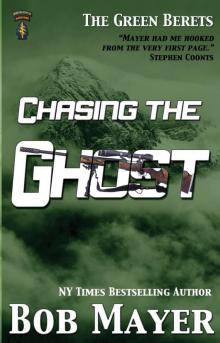 Chasing the Ghost
Chasing the Ghost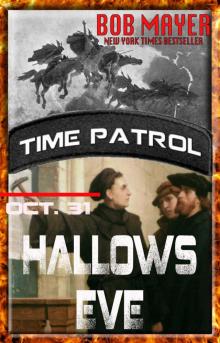 Hallows Eve
Hallows Eve New York Minute
New York Minute Valentines Day
Valentines Day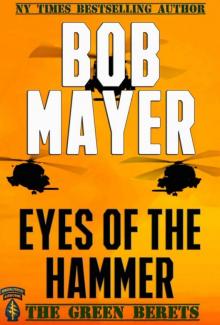 Eyes of the Hammer
Eyes of the Hammer Walk on the Wild Side
Walk on the Wild Side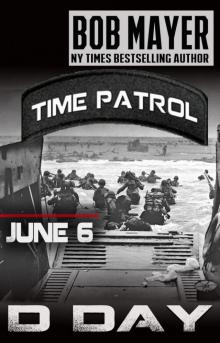 D-Day
D-Day Lawyers, Guns and Money
Lawyers, Guns and Money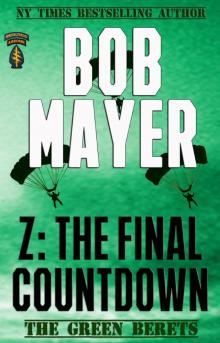 Z: The Final Countdown
Z: The Final Countdown Redemption: Area 51, #10
Redemption: Area 51, #10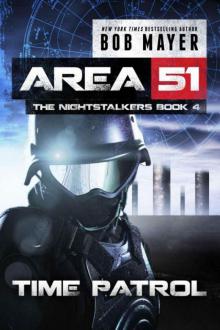 Time Patrol
Time Patrol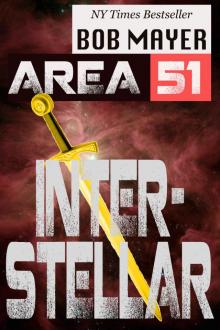 Interstellar
Interstellar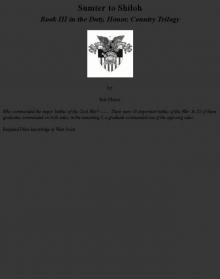 Sumter to Shiloh
Sumter to Shiloh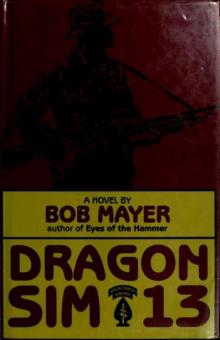 Dragon Sim-13
Dragon Sim-13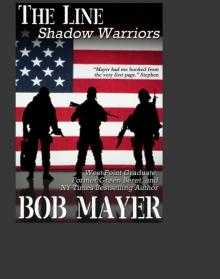 The Line
The Line Omega Missile (Shadow Warriors)
Omega Missile (Shadow Warriors)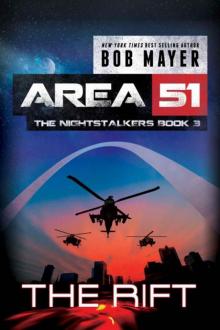 The Rift
The Rift The Jefferson Allegiance
The Jefferson Allegiance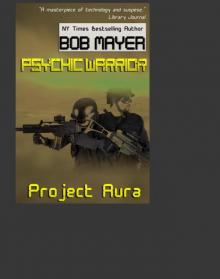 Project Aura
Project Aura Synbat
Synbat Ides of March (Time Patrol)
Ides of March (Time Patrol)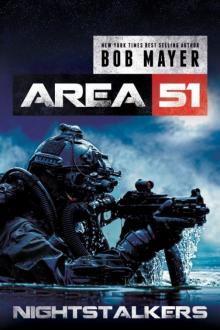 Nightstalkers a5-10
Nightstalkers a5-10 Lost Girls tc-2
Lost Girls tc-2 West Point to Mexico
West Point to Mexico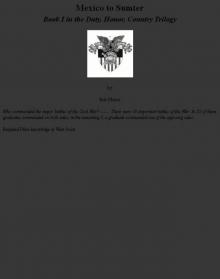 Mexico to Sumter
Mexico to Sumter Area 51_Invasion
Area 51_Invasion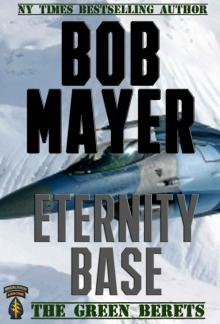 Eternity Base
Eternity Base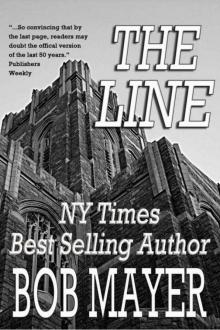 The Line bo-2
The Line bo-2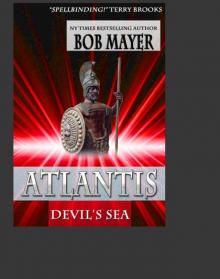 Atlantis Gate
Atlantis Gate I, Judas
I, Judas Area 51_Redemption
Area 51_Redemption Bodyguard of Lies
Bodyguard of Lies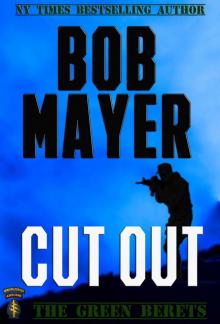 Cut Out
Cut Out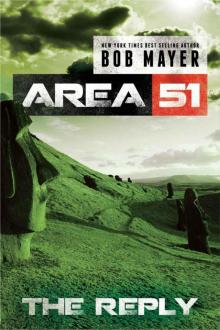 The Reply (Area 51 Series Book 2)
The Reply (Area 51 Series Book 2)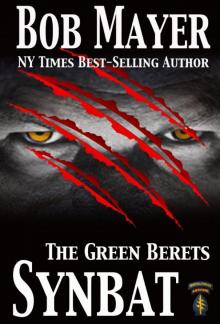 Synbat tgb-3
Synbat tgb-3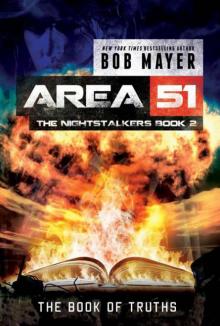 The Book of Truths a5tn-2
The Book of Truths a5tn-2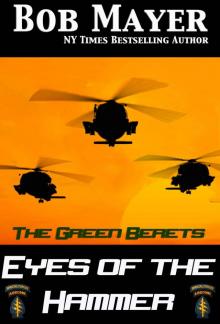 Eyes of the Hammer (The Green Beret Series)
Eyes of the Hammer (The Green Beret Series)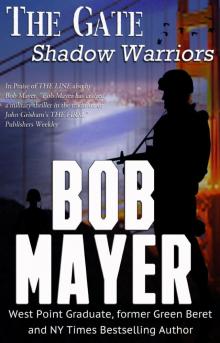 The Gate
The Gate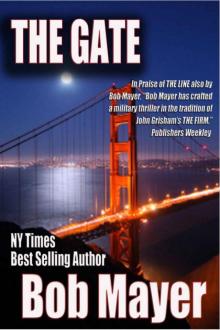 The Gate bo-1
The Gate bo-1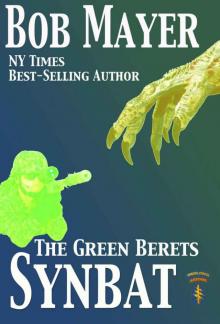 Synbat v5
Synbat v5 Omega Sanction
Omega Sanction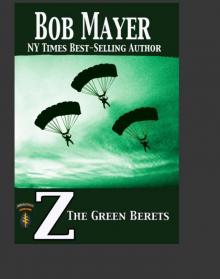 Z
Z Chasing the Son
Chasing the Son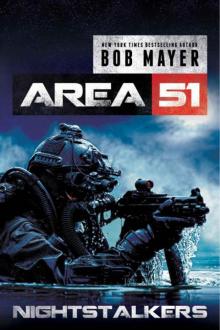 Nightstalkers
Nightstalkers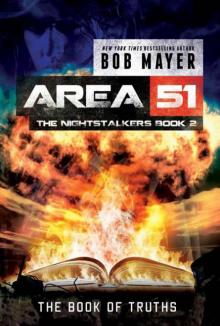 The Book of Truths
The Book of Truths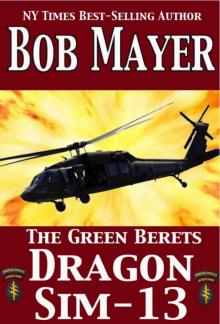 Dragon Sim-13 tgb-2
Dragon Sim-13 tgb-2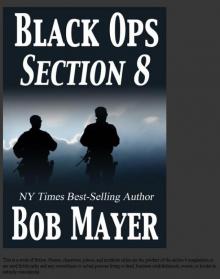 Section 8
Section 8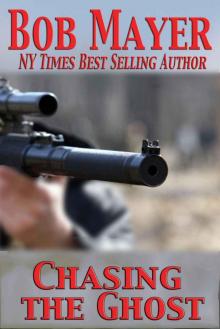 Chasing the Ghost v5
Chasing the Ghost v5 Psychic Warrior
Psychic Warrior Chasing the Lost
Chasing the Lost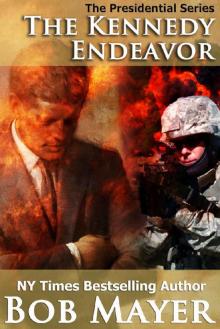 The Kennedy Endeavor (Presidential Series Book 2)
The Kennedy Endeavor (Presidential Series Book 2)